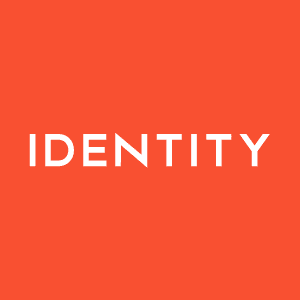What Brand Colours Say About Your Business
For any business or brand, recognising the influence of a pantone is essential to understanding what you’re attempting to communicate and what your audience actually perceives. Colour has become a powerful tool within the visual world, influencing the emotions and behaviours within your target audience. Studies say that 90% of people’s perceptions and assessment of a brand depends on colour, so it will be one of the most important factors to consider when building your brand aesthetic.
When it comes to picking colours best suited for your industry, there is no right or wrong answer. You may well see that some are more commonly used in certain industries, however it does not indicate a rule to follow. Different pantones represent different qualities, and you should aim to use a palette that will represent your brand’s personality best. For example, Audi and Apple associate themselves with neutral colours, like black and white, which connotes to a premium or luxury quality. As colour is the visual component individuals remember most, brand personalities are becoming defined by their use of it to convey meaning and message. Choosing the right palette can hugely benefit your brand, whilst also picking the wrong pantones can have damaging effects – so think carefully about when choosing which ones to associate yourself with. Decide upon a palette that mirrors the identity you are trying to convey.
There are essentially two main palettes: warm (reds, yellows, oranges) and cool (blues, greens and purples). Warm colours denote feelings of creativity, friendliness and passion, whereas a cool palette represents emotions of maturity, peace and serenity. Here’s a breakdown of what each pantone represents and how it can portray your brand’s identity:
- Red: The colour of extremes – symbolising love and passion but also anger and danger.
- Orange: A love or hate pantone, symbolising energy, warmth and good health.
- Yellow: The most luminous colour of the spectrum, representing happiness, optimism and creativity.
- Green: An emotionally positive colour which symbolises balance, harmony and growth.
- Blue: The classic king of colours, a common contender for brands. Blue symbolises trustworthiness and maturity.
- Purple: A luxurious palette with connotations to nostalgia, power and glamour.
- Pink: The colour of true femininity, eluding a feeling of sensitivity, youthfulness and beauty.
- Brown: The true trait of nature. Brown associates itself with reliability, support and dependability.
- Black: When used correctly can communicate glamour, sophistication, exclusivity. It adds substance and gravitas, a brand to be reckoned with and, to be taken seriously.
- White: This is an inherently positive pantone, representing simplicity, purity and cleanliness.
Many of the most recognisable brands in the world rely on a signature palette to build not only visual but emotional recognition of their product or service. Five of the top ten most valuable brands associate themselves with the most commonly used colour – blue. Iconic companies such as Apple and Facebook have built their reputation on using one predominant pantone in their branding. It is essential that you think carefully about the choice of colours, when branding or re-branding your business. Those that you associate with, will evoke specific feelings for prospective customers, so research and choose your palette wisely to make sure you’re conveying the right message.
Need help with branding, marketing, or messaging then myself or the team are here to help. Please get in touch mg@identitygroup.co.uk







